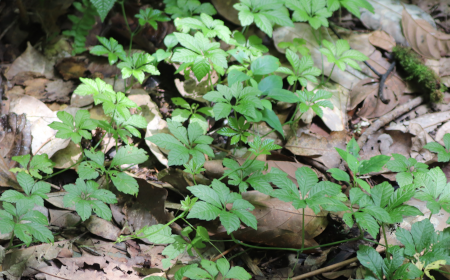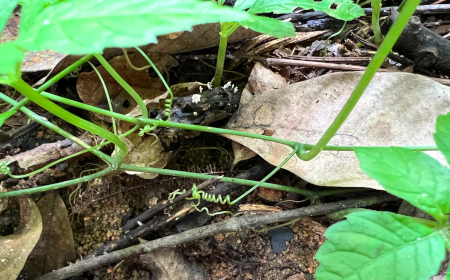Gynostemma pentaphyllum (Thunb.) Makino
| Etymology | Genus | From Greek, gyne=female, stemma=crown; referring to the arrangement of the ovules inside the ovary |
|---|---|---|
| Species | Five leaf, referring to the leaflets | |
| Family | Cucurbitaceae | |
| Synonyms | Vitis pentaphylla Thunb. | |
| Common Names | Poor Man's Ginseng, 绞股蓝, jiaogulan | |
| Status | Exotic: Not Evaluated | |
| Form | Climber | |
| Native Distribution | China, Korea, Japan, India, Sri Lanka, Indochina, Malaysia | |
Diagnostics:
Usually grown as a cultivated plant, Gynostemma pentaphyllum is a herbaceous climber with serrated leaflets arranged in 5-7 in a whorl. While there was no previous documentation on its escapee status, a large patch of the climber was found on the forest floor in Thomson Nature Park.
Interesting Facts:
This plant is listed in two old texts written in the Ming Dynasty (Li & Wei, 2025). In the Herbs for Famine book (救荒本草) written by Prince Zhu Shu (朱橚), it is one of the wild plant species that can be consumed during a famine. In the Compendium of Materia Medica (本草纲目) by Li Shizhen (李時珍), the medicinal usage of this plant was documented.

A sprawning carpet of Gynostemma pentaphyllum on the undergrowth in Thomson Nature Park (2025).

Closeup.

Leaf.

Tendrils.
References
Li X, Liu L, Wei S (2025) Gynostemma pentaphyllum: A review on its traditional uses, phytochemistry and pharmacology. Journal of Functional Foods, 124.
Author: Siyang
Posted: 2025-09-04 / Modified: 2025-10-28